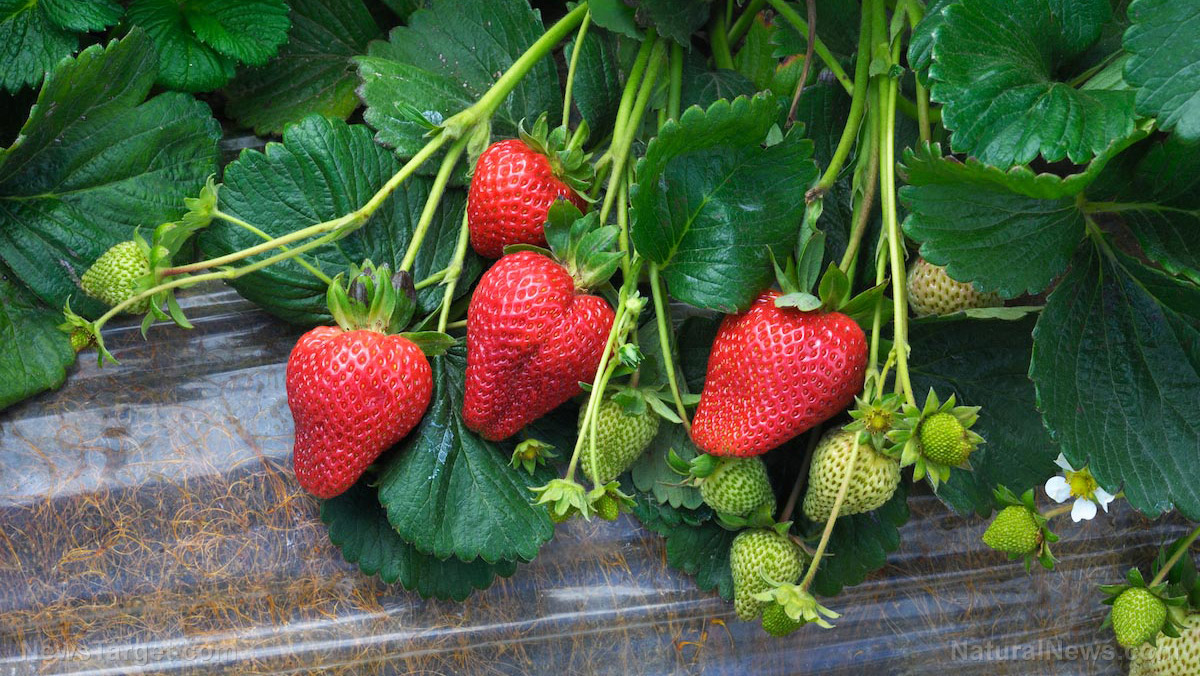Tips for prolonging the shelf life of fresh strawberries
06/06/2019 / By Zoey Sky

Fresh strawberries are delicious and nutritious. Whether you buy organic strawberries or harvest them from your garden, one problem you usually face is how to extend their shelf life.
According to Harold McGee, the author of “On Food and Cooking: The Science and Lore of the Kitchen,” strawberries only last on the shelf for a few days because they have thin skin and a fragile structure. Even if you refrigerate them, strawberries will only stay fresh for several days.
While it’s true that strawberries have a very short shelf life, here are some suggestions that you can try if you want to keep them around for longer.
Get rid of moldy strawberries.
Inspect your strawberries before refrigerating them. All moldy berries should be removed immediately.
Mold spreads easily and getting rid of moldy strawberries preserves the rest of your berries. When buying organic strawberries by the clamshell at a grocery store, flip them over to inspect the whole bunch. If you see a moldy berry, look for another selection of strawberries.
Keep strawberries in the fridge.
Experts at the California Strawberry Commission suggest that the best way to store fresh strawberries is in the fridge. You can keep the berries in their original plastic clamshell packaging with holes for ventilation.
Alternatively, you can transfer the fruit to a paper towel-lined container. Separate the berries by layering them with paper towels to keep them fresh for longer.
Make sure you recycle the plastic packaging if you store the strawberries in a different container.
Store strawberries with the caps intact.
According to the North Carolina Strawberry Association (NCSA), you shouldn’t remove the caps, or green tops, of strawberries before storing. When you remove strawberry caps, the berries lose some moisture.
Wash strawberries only when you’re about to eat them.
Don’t wash all of your strawberries if you only need a handful. Just like blackberries, blueberries, and raspberries, only wash as many strawberries as you will eat or use at once.
McGee explained that rinsing strawberries can make them more susceptible to infection since clinging dirt particles can wear away their protective epidermal layer. (Related: Preventing spoilage: 6 Food items that you don’t need to refrigerate.)
Freeze your strawberries.
NCSA experts advise that if you’re going to freeze strawberries, you should wash and take off their caps then lay them out on a wax paper-lined cookie tray.
Put the cookie tray in the freezer until the strawberries are firm, then store them in an airtight container. Use the frozen strawberries for jams, pastry fillings, or smoothies since they’ll get a little mushy after you defrost them.
Cooking with strawberry caps
If you’re preparing strawberries for a recipe, don’t throw away the caps with bits of berry flesh and leaves. Follow the tips below to minimize your food waste by reusing strawberry caps.
- Strawberry-flavored kombucha – When making strawberry-flavored kombucha, add the caps to the final product. Even the caps are full of nutrients and berry flavor.
- Strawberry-flavored smoothie – If you’re making a smoothie, mix kale and whole strawberries to get an extra dose of greens.
- Strawberry-infused vinegar – Cover strawberry caps with vinegar. Balsamic vinegar, red wine, or white wine work best. Let the mixture sit for at least one hour. Use the infused vinegar for salad dressings and sauces.
- Strawberry-infused water – Instead of buying fruit-infused water, make your own. Get a clean glass jar, add the strawberry caps, then cover them with water. Let the caps sit in the jar for about an hour before you drink the water.
Store fresh, organic strawberries properly to extend their shelf life and make use of strawberry caps to reduce your food waste.
Sources include:
Tagged Under: berries, clean food, Food Preservation, food safety, Food storage, food supply, freezing, Fresh Fruits, grocery, organics, preserving food, refrigeration, shelf life, strawberries
RECENT NEWS & ARTICLES
COPYRIGHT © 2017 FOOD COLLAPSE



















